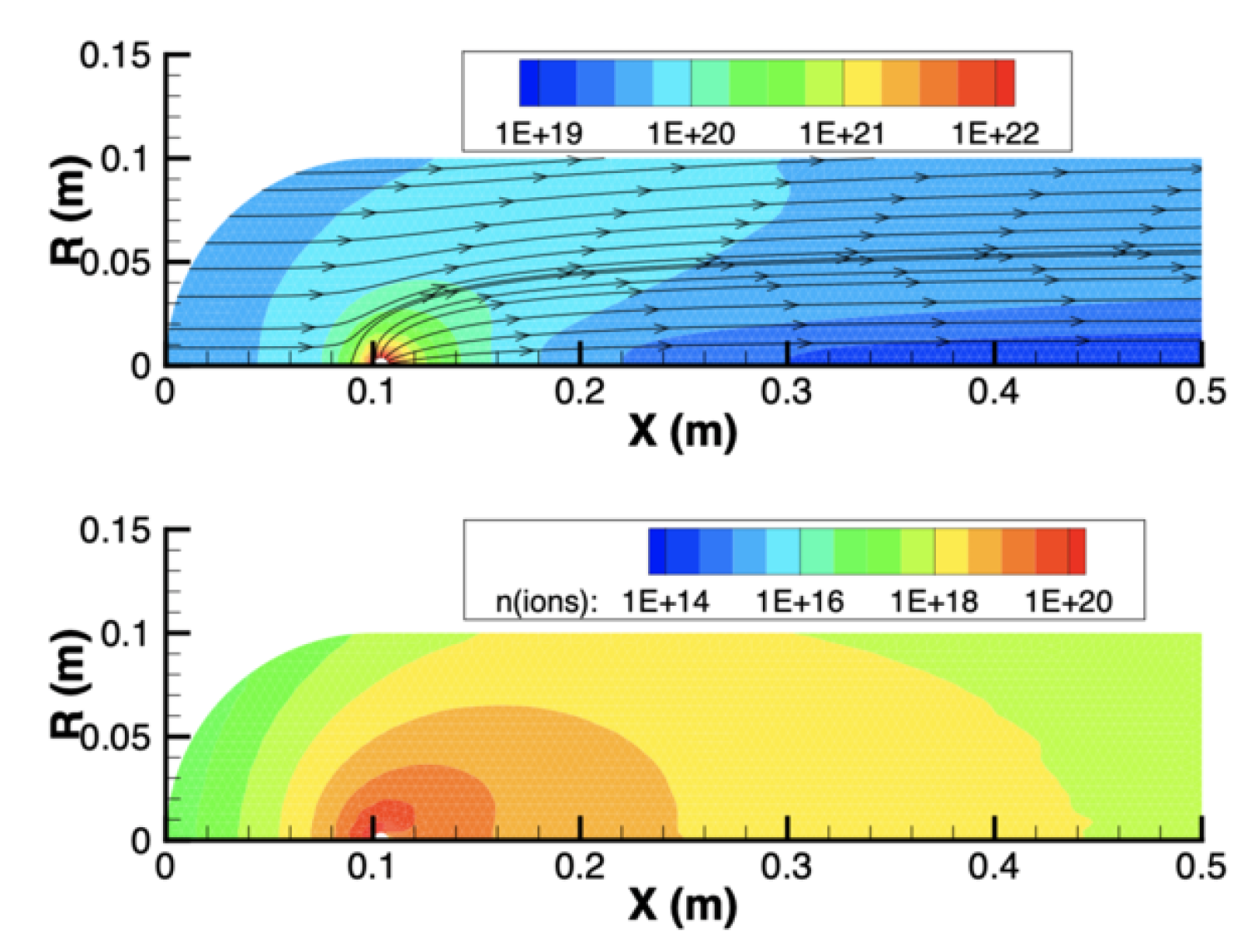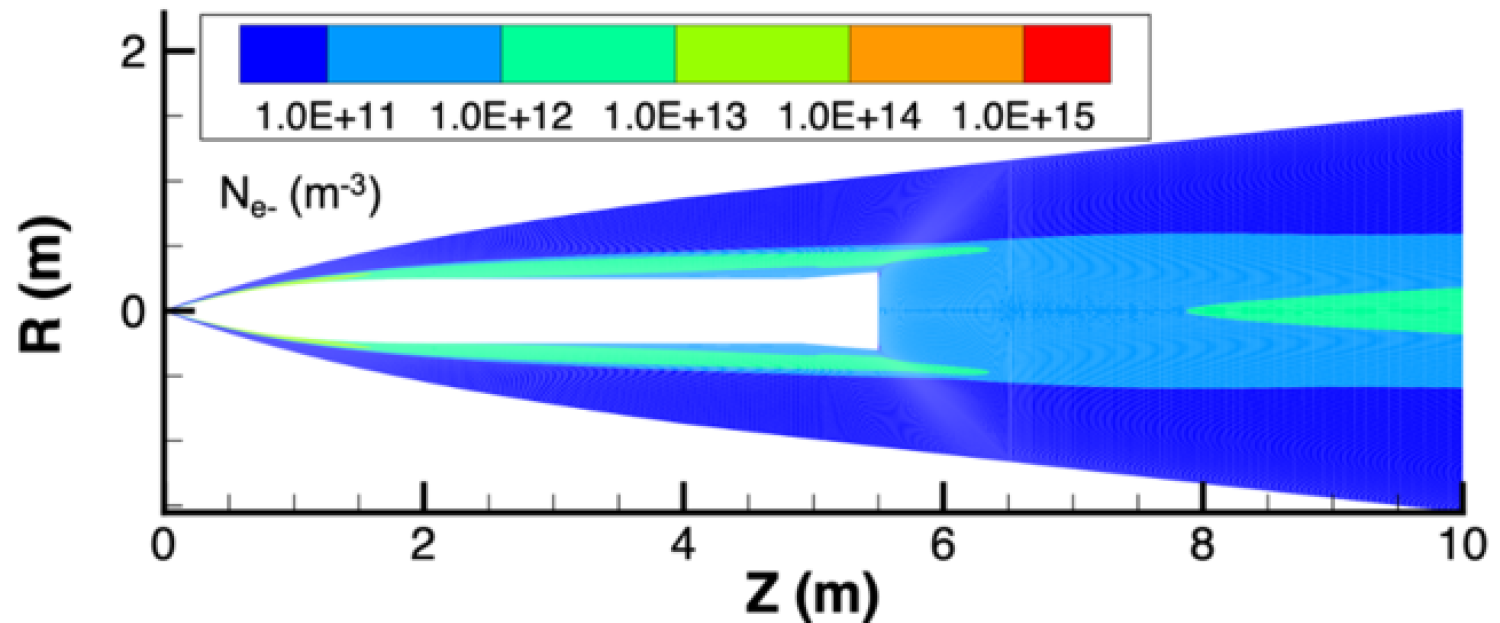Plasma Generation
Introduction
A promising technique for tracking boost-glide hypersonic vehicles involves detecting radio waves emitted by plasma in the wake. Passive detection would be a valuable capability, since existing tracking systems are not well suited to boost-glide vehicles. The purpose of this project is to see whether this kind of passive detection is a feasible method of tracking hypersonic vehicles, and, if it is, to characterize the signals that could be expected from different geometries and flight conditions.
There is a theoretical and experimental collaborative effort underway at CU, which seeks to provide evidence of radio emission from hypersonic objects. Modeling is handled by the NGPDL and is proceeding on two fronts: DSMC of meteoroids and CFD of hypersonic vehicles. DSMC is carried out using the MONACO software, which directly simulates trajectories, collisions, and surface interactions for rarified neutral and charged particles at high speeds. CFD is performed using LeMANS, which solves the Navier-Stokes equations for hypersonic flow in thermochemical nonequilibrium.
Entry of a meteoroid into the atmosphere is followed by ablation of the meteoroid material into the wake and subsequent ionization through high-velocity impact with the ambient atmospheric constituents. Given the rarefied nature of the ambient particles at the altitudes of interest, DSMC techniques are appropriate for simulating the interaction with the meteoroid and wake environment. Current simulations focus on meteoroids less than 1 g in mass (<8 mm diameter) entering the atmosphere at altitudes near 92 km with velocities in the range of 24-72 km/s. The simulations below show neutral (top) and plasma (bottom) densities under one set of conditions. Using an updated model of inelastic collisions, we are currently examining the sensitivity of plasma generation to factors such as meteoroid size and velocity and comparing model results with radar observations.

The CFD analysis focuses on full-scale hypersonic vehicles operating in the continuum regime. Preliminary investigations with SHEFEX II, a German hypersonic research vehicle, have shown that significant plasma production does not occur for extremely sharp noses (<1mm), or for flight velocities less than about Mach 10. Simulations of SHEFEX II did not show any appreciable plasma production unless the flight speed was increased far beyond reasonable expectation of a boost-glide vehicle. Below, plasma density contours are shown for a simulation of SHEFEX II and its near wake at 60 km altitude and 7.5 km/s flight speed. Even at entry speeds, the plasma production is still very low because of how slender the geometry is.

The project is now proceeding with a blunter geometry that will generate more plasma at relevant flight speeds. Once the proper geometry and flight speed have been determined, a detailed study of how different physics influence plasma formation will be performed. To start, this will include different chemistry and turbulence models. Next, the influence of ablation products in the flow will be investigated.
After refining the mechanisms of plasma generation for meteoroid and hypersonic vehicle simulations, a new electrodynamics solver will be applied to model plasma motion over irregular grids. Electromagnetic emissions from this motion can then be modeled.
Investigators
Dr. Eric K. Sutton & Timothy T. Aiken
Acknowledgements
This work is supported through funding from Northrop Grumman Corporation.

